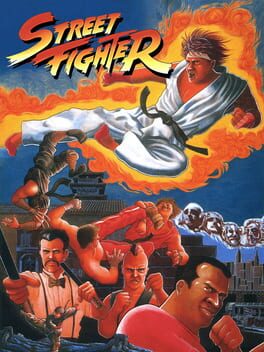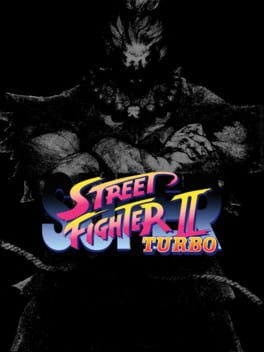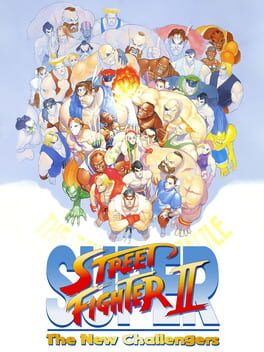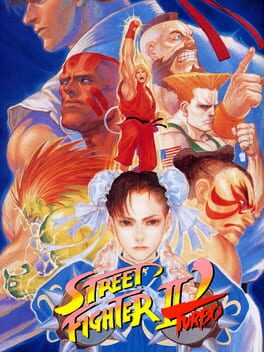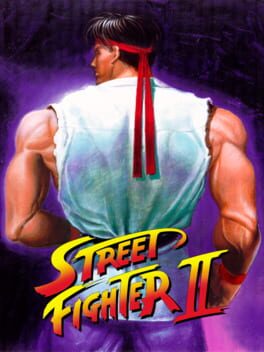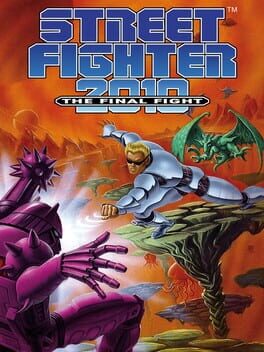

Street Fighter, designed by Takashi Nishiyama and Hiroshi Matsumoto, made its debut in the arcades in 1987. In this game, the player takes control of martial artist Ryu, who competes in a worldwide martial arts tournament, spanning five countries and ten opponents. A second player can join in at any time and take control of Ryu's rival, Ken. The player can perform three types of punch and kick attacks, each varying in speed and strength, and three special attacks: the Hadouken, Shoryuken, and Tatsumaki Senpuukyaku. These are performed by executing special button combinations with the controls. A port for the PC Engine/TurboGrafx CD console was released under the title Fighting Street in 1988. This same version was later re-released for the Wii's Virtual Console in 2009.
Also in series
Released on
Genres
Reviews View More
It's objectively a bad game. It's also hilarious, so my enjoyment of this piece of history came from enjoying kusoge. It's so bad it's funny.
Crusty. The movement is crusty. The music is crusty. Sometimes you can get punished for hitting an enemy. Most of your moves suck ass.
Oh but your opponents? They can zip around the screen precisely, spamming moves that kill you in 2-3 hits. It's nuts.
The first time it happened I couldn't help but laugh: Lee fucking destroyed me in like 3 seconds, moving like a lag-switching, Genei Jin activated, divekick spamming Yun.
The way moves hit is so weird. Sometimes moves can hit multiple times, essentially turning the move into a OHKO (when this happens with your
Of course your normal punches and kicks are the most affected by this. They suck.
If your punches and kicks are awful, do no damage and sometimes just lead to you eating a big hit from your enemy, how are you supposed to win against screen zipping, move spamming enemies? You use your super secret special moves of course!
Everyone knows the
-it takes 3 fireballs to KO an opponent, and it's your only ranged option
-the dragon punch is crazy. It grants you full invincibility and sometimes it OHKOs. At the end of the game it's your only way of defending yourself against the spam of Adon and Sagat.
-there's also the
Too bad actually getting the damn Dragon Punch to come out is painful. I guess the game would be too easy if you could easily do it.
I know you have to negative edge the special moves but even then I was struggling. Sometimes I destroyed and perfected the cpu (I scored 1 lucky perfect round against both Adon and Sagat), other times I NEEDED a dragon punch to save me but 1 missinput and I'm dead a second later.
Beating the game took me 45+minutes. And the whole time I had to endure the soundtrack and sound effects.
"You've got a lot to learn before you beat me. Try again, kiddo!" Is ingrained into my head.
The stage background music is strangely both great and terrible... except for Sagat's, that theme is ear piercing.
Sagat... holy shit Sagat. Adon was painful as he just spammed Jaguar Kick over and over and over and over and over. He was the first unga bunga character in fighting games.
Final boss Sagat is a different beast. He destroys you in 1-2 hits. He's crazy fast, moving around using Tiger Knee while being fully fireball immune. When at full screen (or sometimes right in your face) he can throw a blazing fast Tiger Shot, and I don't think you can block it? I think you can only duck it.
Rounds only last a few seconds vs Sagat. Every time you lose he laughs... every time... it took me so long to beat him, I think I made him sad and on my winning round he did nothing and just took 3 fireballs to the face. I felt like Dan but hey, a win is a win!
After becoming king of the hill I had no time to rest on my glory. A challenger appeared to dispute my title. (I invited my gf to try this funny game) I, of course, successfully defended it, proving I was the strongest street fighter in the world!
The original Street Fighter is an infamously terrible game. There’s only one character to play, the controls are awful, and no one has ever done a special move in it on purpose. These are the things I’ve heard about the game for as long as I can remember, but as the existence of this piece might suggest, I think there’s actually more to the story. Street Fighter 1 is not only a good deal better as a game than its abysmal reputation suggests, it also serves as an intriguing and inspiring entry in the career of its creator that deserves more than we give it.
In Street Fighter 1, you maneuver on a 2D plane and try to land hits on your opponent by selecting from an arsenal of six normal attacks and three special moves (the same fireball, uppercut, and hurricane kick that fighting game players know today). You can jump to change your position or angle of attack and put pressure on a guard that can be either high or low. You can walk forward and backward and threaten space with your normals, control the screen with fireballs and dragon punches… it's a fighting game! There may not be any throws or combos or okizeme, and what is there may only half-work in the first place, but the blurry image of 2D fighting fundamentals is absolutely here on display, in a way that makes it easy to see how games just a few years later would pick up that torch and run with it. It may pale in comparison to its sequel, but it’s hardly the clueless jumble that many people make it out to be. It’s easy to see the future just by playing it.
Of particular note to me is the way special moves work. Just about every single conversation about Street Fighter 1 features the derogatory claim that special moves are more or less impossible to execute in the game. This is actually not true at all! Anyone can pull off specials in SF1, they just need to know the trick. See, possibly as a result of the game’s conversion from its original (awful) pneumatic punching pad controls to a more standard (but still innovative) six pushbutton layout, special moves in SF1 are executed not when the player presses a button down, but when they release a button.
STREET FIGHTER 1 HAS NEGATIVE EDGE, WHY DID NOBODY EVER TELL ME THIS.
When you use button releases for your special move inputs rather than button presses, throwing fireballs is about as easy as in any other game. What fascinates me about this is that these moves require you to know the specific trick to them. Fighting game players today sometimes feel nostalgic for the arcade era, an age where information traveled slowly via smaller-scope, person-to-person conversation within a community, rather than the current online environment where games are immediately picked apart and put back together in a global whirlwind, and knowledge circulates so quickly on social media that the “save that for nationals” mindset simply has no reason to exist anymore. Yet here we are in 2024, and an old game that sits at the very cornerstone of the whole genre has hidden technical knowledge that the vast majority of people don’t know about. Here is a game where to learn its secrets you still have to be told them by someone in the know. How cool is that? I only learned this quirk of the special moves from a random forum post from like fifteen years ago, and from all the conversations I’ve seen about the game most people don’t know about it either! I think that mystical, mysterious quality is something rare and special nowadays, and SF1 has it.
Outside of its merits as a fighting game (which I admit are pretty slim, I wouldn’t want to play it competitively), Street Fighter 1 inspires me because I can feel the hand of its creators in the game, especially that of its director Takashi Nishiyama.
SF1 feels to me like a key touchstone in a creative project Nishiyama was embarking on for much of his career. In 1984, three years before SF1’s release, he designed Kung-Fu Master, a game frequently credited with birthing the beat ‘em up genre. In Kung-Fu Master, the player moves across the screen, beating back enemies with a punch button and a kick button that they can also use while jumping or crouching for aerial or low attacks. At the end of the first stage, an enemy martial artist stands in the player’s way, and to defeat them the player has to reactively block the enemy’s attacks either high or low while sneaking in their own strikes, or else briefly back up out of the enemy’s range and then take advantage of their whiffs. It may be primitive looking, but years before even SF1 you can easily find in Nishiyama’s games the embryonic form of what would become classic fighting game combat.
Several years later Nishiyama would also design Avengers, a top-down beat ‘em up where players took the role of a fighter with punch attacks, kick attacks, and even a special whirling roundhouse move that, to me at least, immediately calls to mind a Street Fighter tatsu. It has the mark of an artist circling around an idea in their work. When I play games like these it feels to me that their creator was striving towards something, taking multiple stabs at an idea they found exciting.
Despite saying in his rare interview appearances that he only ever designed for the mass market and didn’t make games to cater to his own personal taste, at the time of Street Fighter’s development Nishiyama was an active student of martial arts, and in another interview he speaks with excitement about the various fighting styles he wanted to have represented in Street Fighter, noting that seeing those mismatched styles square off against each other would be a key appeal. He designed other games that don’t resemble Street Fighter at all of course, scrolling shooter games and the endless runner genre ancestor Moon Patrol. But here is a designer who kept coming back to these 2D combat games, always adding in little complications like separate punch and kick buttons and varied block-heights, because they made the games more fun to play, but maybe also because there was something about those complications that he needed to explore.
We give a lot of credit to many artists, our assorted Lynches and Kojimas and Miyazakis and others, for navigating a path through their own creative fixations across the breadth of their work. I can’t claim to know anything about the mind of Takashi Nishiyama, but in his games I feel that creative fixation. Fighting games are very important to me, and I truly think a game like the original Street Fighter deserves to be seen positively in the context of its creators’ work. After SF1, Nishiyama would leave Capcom to head his own division at SNK, and soon after he would direct Fatal Fury, a more sophisticated take on fighting games that he has likened to his own Street Fighter II. Together with the team he brought with him from Capcom, including his frequent collaborator Hiroshi Matsumoto (who is essential to the history of the genre in his own right, having the planner credit on Street Fighter 1 and numerous executive producer credits on later fighters), Nishiyama would be at the forefront of SNK’s development teams, leading the company to become the pillar of the fighting game genre we know them as today. He later founded Dimps, the studio that developed Street Fighter IV. The guy just couldn’t stay away from good old punching and kicking games.
It heartens me as a player, designer, and lover of videogames that it's possible to play these games and feel something so human in them, to see an artist toying with an idea, teasing out its essence and refining their craft. Street Fighter 1 feels like an important piece of that to me. It may not be a great fighting game, but it was part of something special, and to me that’s worth celebrating.
